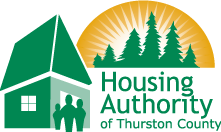Understanding NSPIRE Inspections: Egress
One of the most important safety requirements under NSPIRE (National Standards for the Physical Inspection of Real Estate) is that landlords maintain clear and accessible escape routes—called egress points—in all assisted housing units. This article explains what egress means and what you need to know to stay compliant and keep your tenants safe.
What Is Egress?
Egress means having a safe way for residents to exit their unit during an emergency, like a fire. NSPIRE rules focus most on the bottom three floors of a building, where all three egress points must be accessible and functional. For units on the fourth floor and above, HUD mainly requires access through the entry door.
Required Egress Points on Floors 1–3
To meet NSPIRE standards, the following must be clear and working on the first three floors:
- Exterior doors (front, back, patio doors)
- Bedroom doors
- One window in each bedroom
Note: Windows in living rooms, kitchens, or dining areas are not considered egress points under NSPIRE.
Common Egress Violations to Avoid
- Blocked Bedroom Windows
If the only window in a bedroom is blocked by a window air conditioner, this is a 24-hour deficiency. It will cause the unit to fail inspection and must be fixed immediately. - Inoperable Windows
If a bedroom window won’t open or stay open, it counts as blocked egress and is a 24-hour deficiency. - Furniture Blocking Windows
Surprisingly, furniture like headboards, dressers, or bunk beds blocking a bedroom window is not cited as a violation unless:- A window AC unit blocks the window, or
- Furniture blocks a bedroom or exterior door (which is a 24-hour deficiency).
Best Practices for Landlords
- Educate tenants about keeping windows and doors clear of large furniture.
- Regularly inspect units to ensure bedroom windows open properly and stay open.
- Avoid permanent blockages by prohibiting window AC units in bedrooms unless there is a second, unobstructed window available.
Final Thoughts
Although not all blocked windows are official NSPIRE violations, keeping all escape routes clear is essential for tenant safety and reducing your liability. Understanding these egress requirements will help you pass inspections and provide a safer home for your residents.
If you have questions or want more information about NSPIRE inspections, please contact our inspections team or visit our website for updates and resources.
